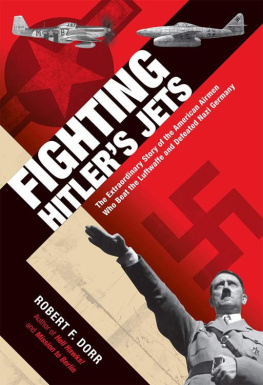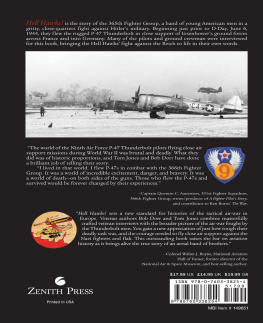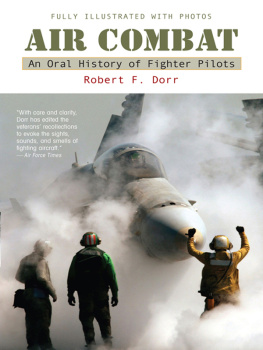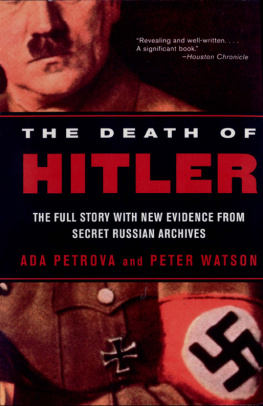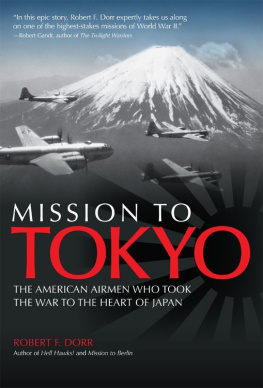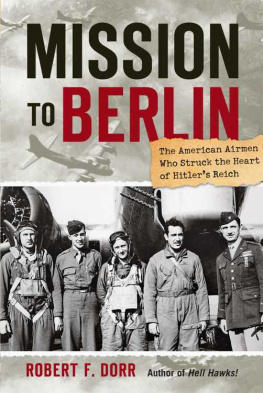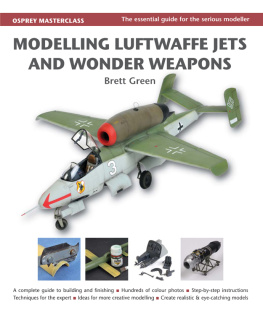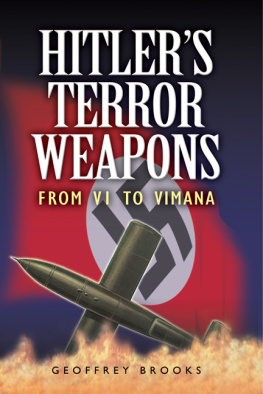The Extraordinary Story of the American Airmen Who Beat the Luftwaffe and Defeated Nazi Germany
Robert F. Dorr
W hen the war was over, when there was no going back to change any part of what happened, a large American man named Valmore Beaudrault sat in a barber shop, awaiting his turn.
Hitler Is AlivePrepares to Return, was the title of an article by George McGrath in the June 1953 issue of Police Gazette.
Beaudrault later told a friend about reading an article with those shocking first three words in its title. The Police Gazette, sold in drugstores and always in barbershops, published stories titled Hitler Is Alive at least three times. Other stories in the magazine told how the Fhrer had escaped from Berlin and was living in exile in Argentina (December 1960), Colombia (June 1968), or in Antarctica (in several editions). In one issue, referring to Antarctica, the term SECRET NAZI BASE was spelled entirely in capital letters throughout.
Beaudrault, who had been a P-47 Thunderbolt pilot during the war and who had found himself fighting Hitlers jets, read one of these stories while awaiting a trim of his reddish-brown locks near his home in Nashua, New Hampshire. He shook his head, and the story took him back. For just a moment he was no longer at home but back again above the battlefields of Europe. For just a moment he again heard the rumble of piston engines, the howl of jets, and the chatter of machine guns in cold, clear skies high above Nazi Germany.
I dont believe this stuff, said Beaudrault, one of 165 Americans who racked up an aerial victory fighting Hitlers jets. I dont believe any of it. We won the war.
AIR SHOW FOR ONE
It may have been one of the largest air shows ever held. Certainly, it was the largest ever for an audience of one.
On Friday, November 26, 1943, a collection of the Third Reichs most advanced weapons stood readyalmostto be demonstrated to Adolf Hitler. The location was the German military airfield at Insterburg in East Prussia. The weather in the region is usually lousy, but this was a cold but clear day.
En route with the Fhrer from Berlin aboard a Junkers Ju 52 tri-motor transport plane, Reichsmarshall (Marshal of the Empire) Hermann Gring hoped his orders to set up an impressive display had been followed to the letter.
Gring knew he was in disfavor with the Fhrer, even though the German air force, the Luftwaffe, of which he was in charge, appeared to be winning the war. German fighters and fighter pilots were shooting down American bombers right and left. A month ago, during one mission, the Americans had lost sixty bombers, each with a ten-man crew aboard. Gring kept telling the Fhrer that the Americans would not be able to continue to lose bomber crews at this rate, that the Allies would never be able to launch an invasion of Nazi-occupied Europe because German fighter pilots commanded the sky.
Hitler heard this, was encouraged by it, but saw Gring, grotesquely overweight and addicted to morphine, as an asset of declining value. The Fhrer ardently hoped that what he would witness today would alleviate any doubts about Gring and Grings Luftwaffe, and ensure that Germanys airmen would continue to command the skies.
In fact, Gring was very much a hands-on leader of the air force he loved, and despite his flawshe was grossly overweight, had a reputation for enjoying fine food and wine, loved partying, and was publicly pledged to blindly follow Hitlerhe was more complex than his latter-day image suggests. He had counseled against Germany starting the war because he felt its forces were not ready. In Hitlers Charisma, Laurence Rees wrote:
Gring was a more complex character than the bluff, bullying caricature that is so often presented, and his views about the road Hitler was traveling were complex. It wasnt that Gring was against Nazi aggressionquite the contrary. What Gring worried about [in 1938]as did Hitlers generalswas a wide-ranging conflict that involved Britain, France, and potentially America and the Soviet Union as well.
Gring was happily married to the actress Emmy Sonnemann and was father to a daughter, Edda, who was just over a year old. They lived in epic splendor at his vast estate in Carinhall in the Schorfheide Forest and at his grand house in Berlin. Life for Gring was good.
Gring feared Hitlers temper. Even though he was officially the second-ranking figure in the Reich, he had never really been an insider. Jittery about what would happen on this day, Gring also saw this as his day to shine.
Gring looked like a child with a new toy, one observer commented, as he prepared to claim credit for Germanys recent scientific advances. The Fhrer was especially interested in a new jet aircraft called the Messerschmitt Me 262 Schwalbe (Swallow). Today Gring would be certain it was showcased to good advantage. This was his chance, he believed, to restore his on-again, off-again status in good standing with the Fhrer. It was also a grand opportunity to outshine his rival, Generalfeldmarschall (Field Marshal) Erhard Milch, who held the title of air inspector general.
Several black, or secret, aircraft and items of equipment were ready for Hitlers inspection. None looked more dull or deadly basking in the winter sun than the Me 262, the Wunderwaffe or wonder weapon that was soon to be touted as the worlds first operational jet fighter. Gring had been singing the praises of the Me 262 for months. For todays show, two prototypes of the Me 262 were dismantled and shipped by rail with a crew of the Messerschmitt companys most experienced mechanics. The trip took them five miserable days through Czechoslovakia and Poland.
Although he was his countrys highest-ranking military officer, wearing an elaborate uniform of his own design dripping with awards and decorations, Gring was not as well informed about the Me 262 as he thought.
This soon became apparent after the Ju 52/3m landed at Insterburg just past noon, taxied to a halt in front of the top brass at the military airbase, and disgorged its very important passengers. Emerging from the transport were Hitler, Albert Speer, Gring, Milch, and an entourage of officers of the Luftwaffe. Hitlers personal pilot, and the only pilot Hitler would fly with, SS-Brigadefhrer (Major General) Hans Baur, said that he flew all of these notable people from Berlin, taking off from Tempelhof and making the short flight in good weather, so there was no problem in having the transport plane overloaded with so many notable persons. Hitler, it should be noted, did not like flying on a crowded plane, and always kept a seat for himself and his painting of Frederick the Great, the great German military leader he admired so much, in a case. He did not talk during flights, since flying scared him. Baurs recollection notwithstanding, some of the other luminaries may have traveled from Berlin aboard other airplanes or arrived by other means.
Karl Baur, chief test pilot for Messerschmitt and no relation to Hans, remembered Hitler arriving with a flock of Generals and grim-looking SS guards at his side. Karl Baur was a virtuoso in the cockpit of the new aircraft being developed with those new engines. He had no idea that within the short span of a couple of years he would observe his Me 262 at displays in two places with similar-sounding namesInsterburg and Indiana.

